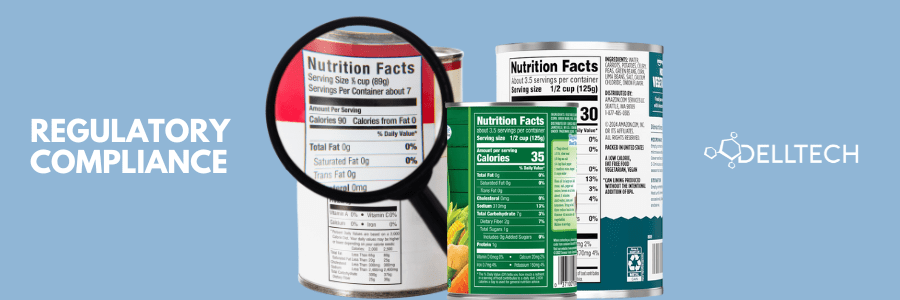Overview
On February 12, 2025, Chlorhexidine and its salts were officially added to Part 2 of Schedule 1 of the Canadian Environmental Protection Act, 1999 (CEPA). This update, issued under the Chemicals Management Plan (CMP), does not impose immediate regulatory burdens on manufacturers—but it does signal forthcoming pollution prevention and risk management measures. The CMP plays a crucial role in managing chemical substances, ensuring they do not pose risks to human health and the environment.
If your products contain chlorhexidine, now is the time to assess your inventory and prepare for future CEPA compliance requirements.
What is the Canadian Environmental Protection Act?
The Canadian Environmental Protection Act (CEPA) is the cornerstone of Canada’s environmental legislation. It empowers regulators to:
- Assess and manage toxic substances
- Implement pollution prevention measures as part of CEPA’s functions
- Protect ecological systems and human health by minimizing exposure to hazardous chemicals
- Collaborate on international environmental standards
- Engage in regulatory cooperation with international organizations and regulatory agencies to manage chemicals and align with global standards
By classifying substances like chlorhexidine as “toxic,” CEPA enables regulatory agencies to take timely action.
Which Chlorhexidine and Its Salts Were Added?
| CAS RN | Common name | DSL name or chemical name |
| 55-56-1 | Chlorhexidine | 2,4,11,13-Tetraazatetradecanediimidamide, N,N’’-bis(4-chlorophenyl)-3,12-diimino-(chlorhexidine) |
| 56-95-1 | Chlorhexidine diacetate | 2,4,11,13-Tetraazatetradecanediimidamide, N,N’’-bis(4-chlorophenyl)-3,12-diimino-, diacetate |
| 3697-42-5 | Chlorhexidine dihydrochloride | 2,4,11,13-Tetraazatetradecanediimidamide, N,N’’-bis(4-chlorophenyl)-3,12-diimino-, dihydrochloride |
| 18472-51-0 | Chlorhexidine digluconate | D-Gluconic acid, compound with N,N’’-bis(4-chlorophenyl)-3,12-diimino-2,4,11,13-Tetraazatetradecanediimidamide |
Why Was Chlorhexidine Listed as Toxic Under CEPA?
A screening assessment concluded by Health Canada and ECCC that chlorhexidine and its salts meet the criteria for toxicity under Section 64(a) of CEPA, particularly due to:
- Ecological harm to aquatic ecosystems, highlighting the potential adverse effects on aquatic and benthic organisms.
- Persistence and bioaccumulation potential
- Risk of long-term environmental contamination
Additionally, the assessment identified significant human health risks, emphasizing the potential adverse effects on human health through long-term inhalation and incidental ingestion.
Objective of the CEPA Schedule 1 Addition
Adding chlorhexidine to Part 2 of Schedule 1 allows the government to:
- Develop risk management instruments (e.g., bans, limitations, performance agreements, environmental performance agreement)
- Prioritize pollution prevention strategies
- Consult stakeholders before implementation of regulatory measures
What Does This Mean for Industry?
Key Takeaways:
- No new regulatory obligations at this time
- A small business lens analysis indicates that the Order will not impose additional costs or burdens on small businesses.
- No new administrative or compliance costs or cost impact for small businesses
- Businesses should evaluate chlorhexidine usage in their products
- Risk management measures are expected to follow
- Stakeholder consultations will guide future regulations
What Risk Management Measures Should Manufacturers Take Now?
Strategies for minimizing risks associated with toxic substances include substitution, implementation of best management practices, development of guidelines for safe handling and disposal, and implementation of monitoring and reporting requirements.
- Review product formulas for chlorhexidine content
- Track updates to CEPA regulations and stakeholder consultations to develop risk management instruments for compliance
- Prepare for potential regulatory changes under Canada’s Strengthening Environmental Protection for a Healthier Canada Act, including future risk management instruments and their potential impact
- Conduct thorough human health assessments to ensure regulatory compliance and evaluate risks to human health
Dell Tech Can Help
Contact us today for tailored consulting services. Read our blog CEPA Cosmetic Consultant to learn more.
DELL TECH HAS PROVIDED PROFESSIONAL, CONFIDENTIAL CONSULTING SERVICES TO THE SPECIALTY CHEMICAL INDUSTRY IN CANADA, THE USA, EUROPE AND ASIA FOR THE LAST 40 YEARS.
[INSERT_ELEMENTOR id=5705]





